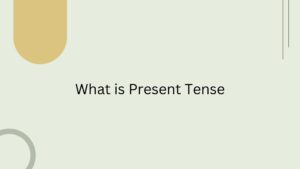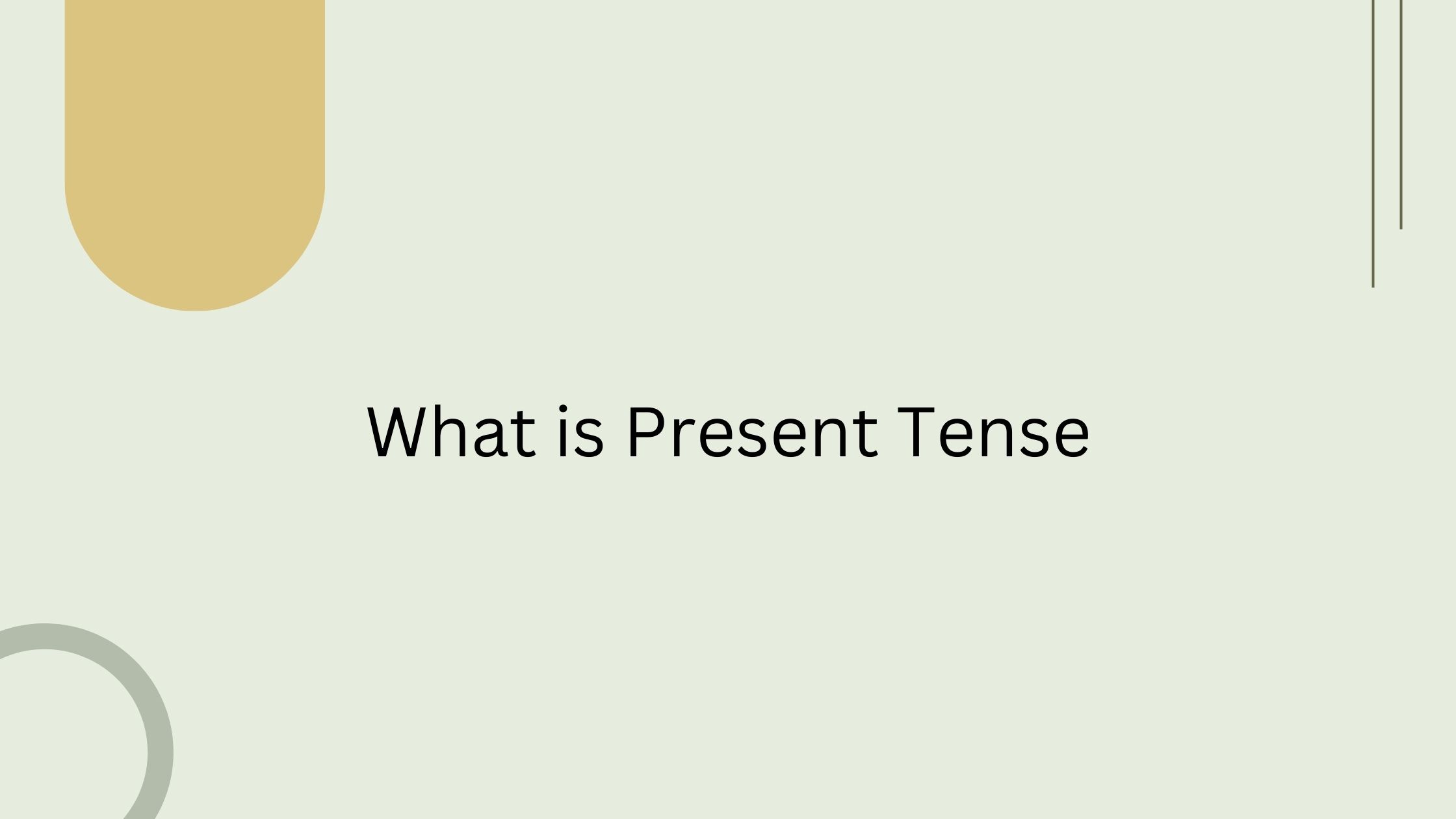The present tense is one of the most fundamental concepts in English grammar, referring to actions or states of being that occur at the current moment or happen regularly. It is essential for expressing facts, habitual actions, and ongoing situations.
Mastering the present tense is crucial for clear and effective communication because it allows speakers and writers to convey what is happening right now or what generally happens.
The present tense is divided into four main forms: present simple, present continuous, present perfect, and present perfect continuous. Each form serves a different purpose and helps convey a more specific meaning.

1. Present Simple
The present simple tense is the most basic form of the present tense. It is used for actions that occur regularly, facts, and general truths. This tense is commonly used to describe habits, routines, and things that are always true.
Formation:
In its simplest form, the present simple is made by using the base form of the verb. For the third person singular (he, she, it), an “-s” or “-es” is added to the verb.
- I play soccer every weekend.
- She works at a hospital.
- The sun rises in the east.
Uses of Present Simple:
- Habits or routines: “He drinks coffee every morning.”
- General truths or facts: “Water boils at 100°C.”
- Scheduled events in the future: “The train leaves at 6 PM.”
- Instructions or directions: “You turn left at the traffic light.”
2. Present Continuous
The present continuous (or present progressive) tense is used to describe actions that are happening right now or around the current moment. It is also used for temporary situations and future plans.
Formation:
The present continuous is formed by using the present tense of the verb “to be” (am, is, are) followed by the present participle of the main verb (-ing form).
- I am reading a book.
- She is cooking dinner.
- They are working on a project.
Uses of Present Continuous:
- Actions happening at the moment of speaking: “She is talking on the phone right now.”
- Temporary actions or situations: “I am staying with my parents for a few weeks.”
- Future plans or arrangements: “We are going to the movies tonight.”
- Trends or changes: “The price of fuel is increasing.”
3. Present Perfect
The present perfect tense describes actions that have occurred at an unspecified time in the past but are relevant to the present. It is also used for actions that started in the past and continue up to the present.
Formation:
The present perfect is formed by using the present tense of “to have” (has, have) followed by the past participle of the main verb.
- I have lived in this city for five years.
- She has finished her homework.
Uses of Present Perfect:
- Unspecified past actions relevant to the present: “I have visited France.”
- Actions that began in the past and continue in the present: “He has worked here since 2010.”
- Experience: “They have been to Japan.”
4. Present Perfect Continuous
The present perfect continuous tense is used to describe actions that started in the past and have been continuing up until the present moment. It emphasizes the duration of the action.
Formation:
It is formed by using the present tense of “to have” (has, have), followed by “been” and the present participle of the main verb (-ing form).
- I have been studying for three hours.
- She has been working at the company for five years.
Uses of Present Perfect Continuous:
- Actions continuing from the past into the present: “We have been waiting for the bus for 20 minutes.”
- Emphasizing duration: “He has been playing the guitar all afternoon.”
5. Common Mistakes with Present Tense
While the present tense is straightforward, learners often make some common mistakes. These include:
- Mixing up the present simple and present continuous: Remember, the present simple is used for regular actions, while the present continuous is for actions happening now.
- Incorrect use of present perfect: The present perfect is not used with specific time expressions like “yesterday” or “last year.” Instead, use it with unspecified times (e.g., “I have seen that movie”).
6. Conclusion
The present tense is essential for describing current actions, habits, and ongoing situations. Whether you’re talking about what’s happening right now, what happens regularly, or what has been happening, the present tense provides clarity and precision in communication. Understanding the four forms—present simple, present continuous, present perfect, and present perfect continuous—enables speakers and writers to express a wide range of meanings related to the present time.
